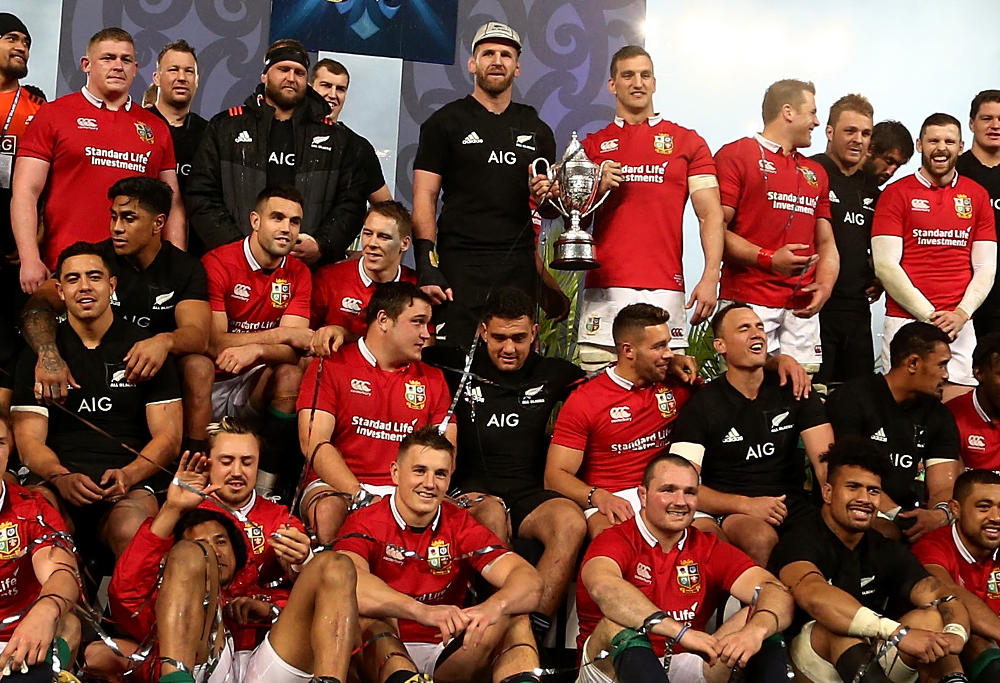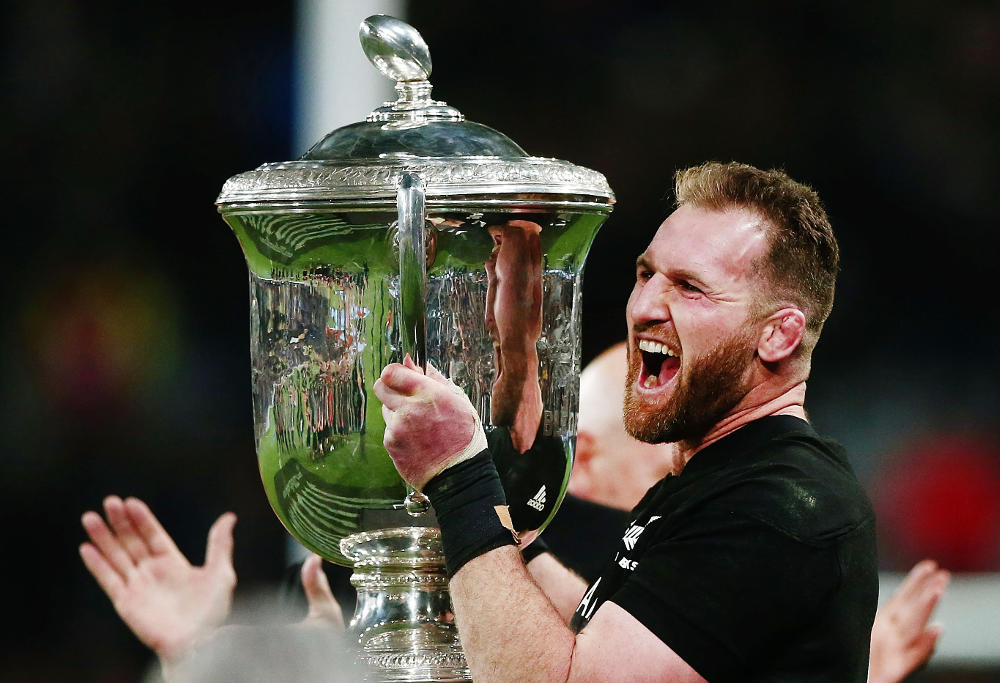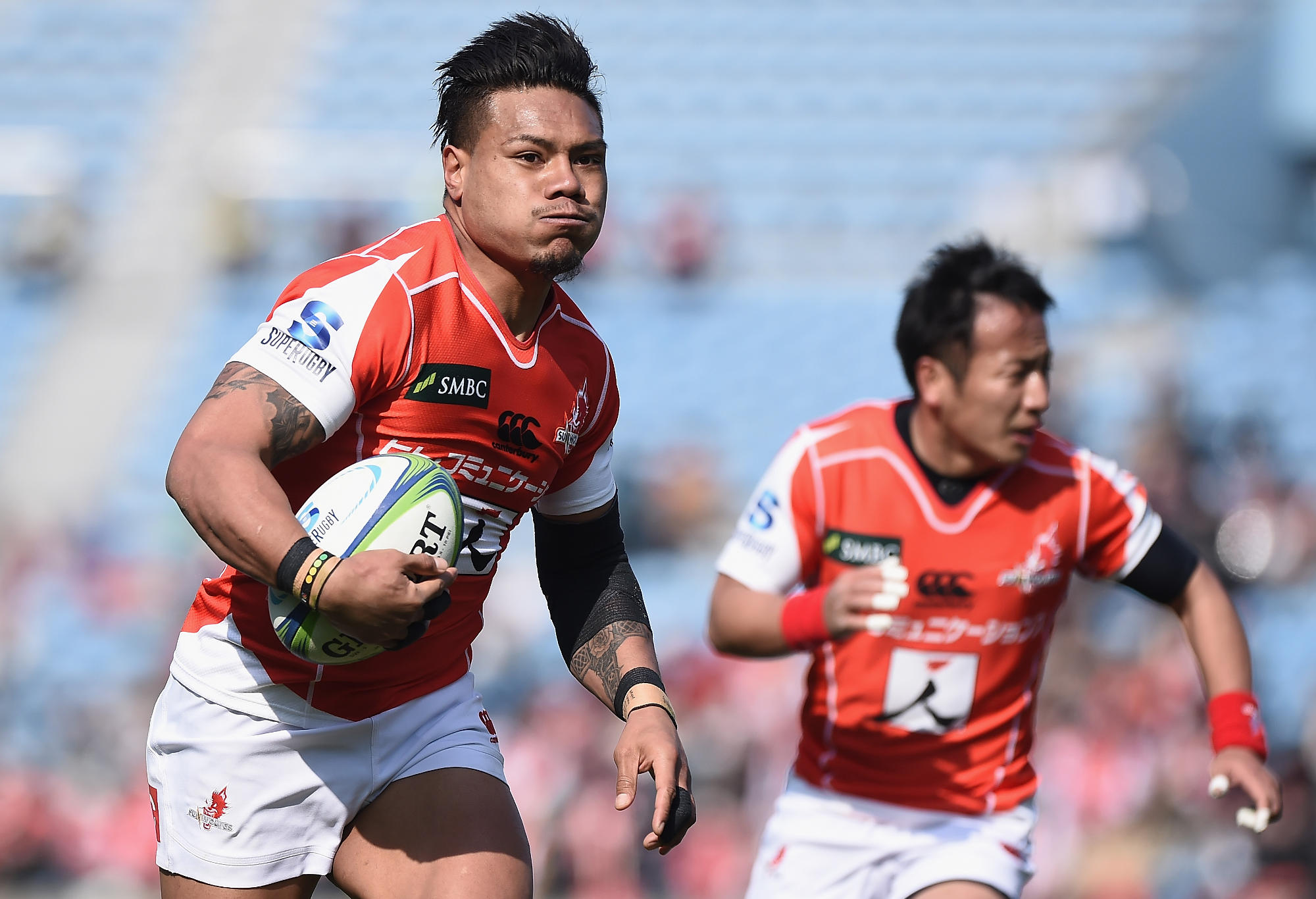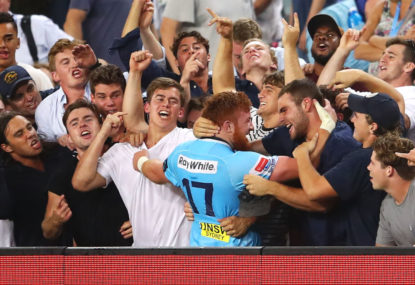Among the many unflattering quotations about committees, one stands out: ‘a committee is a group of people who individually can do nothing, but who, as a group, meet and decide that nothing can be done.’
Comprising four national rugby unions, separated by thousands of miles of ocean and markedly different rugby cultures and domestic circumstances, SANZAAR is the ultimate committee. And with all decisions requiring unanimity, it should thus come as no surprise that this camel designed as a horse produces outcomes that frustrate rugby fans in all four precincts.
In my book A World In Conflict: The Global Battle For Rugby Supremacy, I outlined how Super Rugby has evolved into an awkward hybrid of; a provincial competition; a professional franchise competition; a development pathway for national teams; a vehicle for showcasing southern hemisphere rugby; a means of keeping players in their home nations; a critical revenue source for its partner nations and a vehicle to expand into new markets.
It’s a hotchpotch of conflicting objectives, and when local factors are added, like quotas and safety concerns in South Africa, other more popular competing
sports in Australia, a small professional player base in Argentina, and the affordability for fans to continually attend rugby in New Zealand, the cross-purposes, the conflicts of interest, and constraints that SANZAAR must work within are laid bare.
Simply, they are trying to cover too many bases at once, and it’s no wonder fans are crying ‘enough’.
But for all SANZAAR’s failings – and there are many – the stark reality that is conveniently ignored by agenda-driven commentators and those who eagerly jump on their bandwagons is that there is yet to be put forward any alternative solution that provides a better, financially viable outcome for all the four member nations, who are operating in a global commercial marketplace.
In a revealing interview last year, New Zealand Rugby CEO Steve Tew conceded a number of problems around Super Rugby but emphasised how the results from the 2015 Rugby World Cup – with the SANZAAR unions filling all four semi-final places – demonstrated that the SANZAAR nations were getting many important things right.
[latest_videos_strip category=”rugby” name=”Rugby”]
World rankings ebb and flow, but with the Rugby World Cup universally considered the ultimate yardstick, it’s hard to argue against the four leading southern hemisphere nations blanking the northern nations to finish 1-4.
But this is only part of the story. Not only is SANZAAR fighting to ensure the on-field success of their four Test sides, but also to ensure that the primacy of Test rugby itself is maintained. And for this rugby fans should be grateful.
Imagine for a moment that Super Rugby was somehow made the best rugby competition in the world, containing the best players, all being paid the highest wages, in front of full stadiums and eager free-to-air TV audiences at friendly hours. Even if that were possible (and I assure you it isn’t), it could only be achieved to the detriment of the status and quality of international rugby.
That’s a game SANZAAR isn’t playing. Hence the delicate position where they want Super Rugby to be better, but not so much better that they too get caught up in the global scramble to claim the world’s best franchise/club competition – at the expense of keeping Test rugby at the forefront.
Since Scotland hosted England in Edinburgh in 1871, rugby’s pinnacle has always been Test rugby. Just 23 years of professionalism, however, has changed the dynamic. The tardiness of the RFU and FFR in allowing players to be contracted to clubs rather than centrally to their unions has not only ceded control over their own destiny, but is now impacting on all rugby playing nations around the world.
Anyone who believes Test rugby will continue as of right – just because it always has – only has to look at cricket, where private ownership in India, fuelling the greed of the three wealthiest cricketing nations, is well on the way to destroying the game’s longest format.
Ditto soccer, where the majority of international fixtures are meaningless friendlies, mostly played without star players, ordered or influenced to sit out at the behest of their clubs.
Every four years the British Lions tour is compromised further and further – to the point where, despite the resounding success of last year’s tour to New Zealand, the English clubs will almost certainly wield enough power over the home unions to ensure that future Lions sides will either cease or be so constricted they won’t be worth having.

(AAP Image/ David Rowland)
Of course, SANZAAR knows that all is not right with Super Rugby. It acted hastily last year to make changes, but any amount of tinkering around the edges can’t hope to give it what it really needs. That would only come from relinquishing control and administration to an independent commission – free of the national unions’ direct influence.
This move would almost certainly deliver a far better Super Rugby competition, and would include the possibility of players being selected for franchises outside of their country of origin – ostensibly with a view to evening up the competition.
But consider how the drawbacks far outweigh any benefits:
1. If the Sunwolves were to be made more competitive by the addition of Beauden Barrett and Malcolm Marx, for example, the impact on tribal fan interest in Wellington and Johannesburg would be massive;
2. Steve Hansen and Michael Cheika would lose control over their Test players’ preparation, coaching and availability, leading to inferior outcomes for the All Blacks and Wallabies;
3. While a better Super Rugby competition would please the broadcasters who fund the game, the component that carries the most value in SANZAAR’s broadcast deal is Test rugby;
4. Anything that elevates the status of franchise/club rugby at the expense of Test rugby is a net negative for the sport (who believes that the French model is one to aspire to?).
Need more convincing? New Zealand’s ongoing success, Ireland’s rise up the world rankings and Leinster’s European Championship glory are no accident. Central contracting and focusing on developing your own talent actually works; freeing up player movement across borders is the antithesis of this.
Why should successful countries be made to copy what unsuccessful countries do? When people say that Super Rugby is broken, perhaps what they really mean is that they are sick of one country dominating. One of agitator Alan Jones’ so-called fixes is to abandon Super Rugby in favour of a trans-Tasman competition. How this would result in Australian sides suddenly winning over New Zealand sides, and make Australian fans feel better about the game, is conveniently left unexplained.
Another popular view is for Australia to revert to a purely domestic situation. That might fix the problem of New Zealand dominance, but only at a club/franchise level. Take care not to get knocked over by the swarm of elite players headed overseas seeking market value, and don’t expect to see the Bledisloe Cup or the World Cup again – ever.

(Photo by Anthony Au-Yeung/Getty Images)
So what does this mean for Super Rugby moving forward?
For one, neither Super Rugby nor SANZAAR are about to self-combust. Swedish professor Hans Rosling – one of Time magazine’s 100 most influential people in the world – wrote of ‘the negativity instinct’, where he explained how the human instinct is to notice the bad more than the good. This, he says, is due to the misremembering of the past, selective reporting by journalists, and the feeling that as long as things are bad it’s heartless to say they are getting better.
How much does that sound like it was written for Super Rugby?
The hysteria that accompanied recent reports about expansion into the USA was instructive. SANZAAR was attacked for something it was patently not doing. What it was actually doing was exploring potential options for the future, like any prudent business does. To this list add exploring ways to bring Andrew Forrest and World Series Rugby into future alliance.
In the short term, don’t expect too much to change coming out of this weekend’s SANZAAR board meeting in London. SANZAAR is about to ramp up a new round of broadcasting rights negotiations that are crucial for all four nations. Irrespective of uncertainty around South Africa’s long-term plans, and Australia’s woes, SANZAAR’s primary focus is to extract maximum value from a post-2020 broadcast deal, which they hope will allow it to keep its best players in the southern hemisphere for the forseeable future.
It is true that South Africa have more options, but the only financial outcome that would justify them pulling up stumps and leaving their SANZAAR partners whistling in the wind is admittance into the Six Nations. And not even the Welsh rumour mill is claiming this as a realistic possibility in the future.
Just before I’m consigned to the ‘loony bin’ for defending SANZAAR, please allow me a few of swipes of my own.
SANZAAR’s most consistent failing has been its inability to connect itself to fans of the game, and to connect fans to itself. The fact that most fans (and potential fans) do not understand what SANZAAR is and how it works, and have been allowed to develop antipathy towards Super Rugby, is an indictment on SANZAAR’s inability to step beyond the constraints of committee and employ marketing expertise that would ensure that fans ride the journey with them, not against them.
The admittance of the Sunwolves into Super Rugby, without first ensuring that they were sufficiently organized and resourced to be competitive with the world’s best sides, was rank stupidity.

(Photo by Matt Roberts/Getty Images for Sunwolves)
And there is another failure looming. The ladder confirms most people’s view that the Hurricanes and the Crusaders are the two best sides in this year’s competition. Because the winner of each conference is guaranteed a home final (a sensible move to ensure interest in each main market is maintained into the finals series), the side that finishes second in the New Zealand conference will be ranked fourth overall, behind the three conference winners, as the top wildcard.
Should results go according to seeding in the first playoff round, the sides ranked 1 and 4 (currently the Crusaders and Hurricanes) will meet in an elimination final – there is no permutation that allows them to play off for the title.
This is a horrid mistake that needn’t have been made. Allowing the top wildcard to be ranked in line with their final overall ladder position – letting the chips fall where they may – would still allow the two other franchise winners their home final. In this example, they would simply be ranked 3 and 4, instead of 2 and 3.
Despite inconsistencies and anomalies, Super Rugby has a great history of delivering the best side across the season as the ultimate champion. By potentially preventing the Crusaders and the Hurricanes meeting in the final, SANZAAR is short-changing fans and needlessly putting that record at risk.
































































































